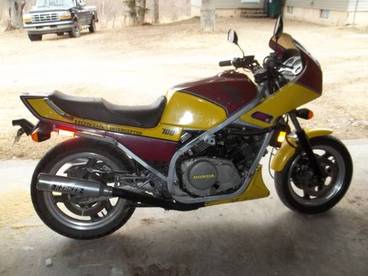
From the Michigan Craigslist ad: "Custom Paint, Extra Fairing, Carbs. Nice Cool Bike! $1900 OBO. Call Ed"
I don't think Ed is going to get many calls.
|
 ...this guy wouldn't have any taste at all. I know there's bike modifiers out there with vision and an eye for color and style, but (to my eye) whoever came up with this paint job isn't part of that fraternity. From the Michigan Craigslist ad: "Custom Paint, Extra Fairing, Carbs. Nice Cool Bike! $1900 OBO. Call Ed" I don't think Ed is going to get many calls.
0 Comments
The price of putting a brand new Interceptor in your garage keeps edging downward. Here's a base model 2014 VFR800 offered for $7999 out-the-door. The bad news; it's in Fargo, ND. And it's December.
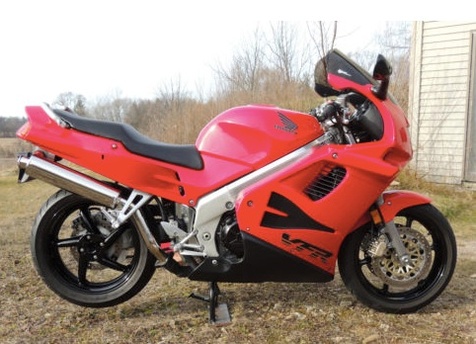 eBay item number 272075884896 eBay item number 272075884896 Here's a prime example of why the Honda VFR series represents such a great value in the used moto universe. Offered at an opening bid of $3150 with no reserve (a rarity on eBay these days) is this beautiful 1996 VFR750F showing only 4027 miles. Sporting a Staintune muffler and up-to-date maintenance, this desirable forth-gen model looks great in the photos and the seller seems upfront with his description of the minor flaws. Located in Beloit, WI, just a short ride from the plush office suite of V4Dreams. I like it. UPDATE: Sold at $3150. Item number 172026910461 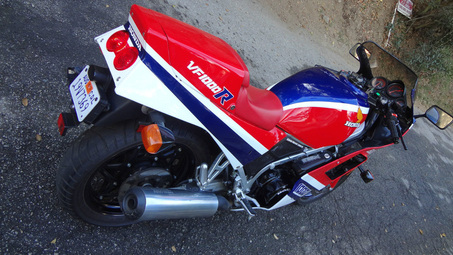 Honda's short and unsuccessful production stint with the big-bore VF resulted in two distinct models for the U.S. market. 1984 saw the introduction of the "F" Interceptor model which was essentially a larger version of the VF750F. With flaccid sales the Euro "R" version quickly replaced the F in 1985. The frame and rear shock were carryovers but the rest of the VF1000R was a thorough redesign, employing gear-driven cams, full bodywork and different wheels, brakes and more. Styling was meant to mimic the endurance racer look popular in Europe. The concept worked for some, not so much for others. The big VF continued in the U.S. through 1986 with some minor changes, the most obvious being cosmetics; minor paint scheme changes and dual-bulb headlights replacing the squarish one from '85 (and the Interceptor name dropped). While the R model was a technological and aesthetic improvement over the F, it was also heavier and much more expensive...and slower than the inline-four competition, even Honda's own 1000 Hurricane. It was not missed when it quietly disappeared from the lineup. Offered here by a California seller is an 11,000-mile 1986 VF1000R survivor in what appears to be near-perfect original condition. The owner used the bike in an appropriate role as a piece of home decor. The photos look good and the seller indicates he has set a low reserve. Bidding is active and someone who loves this model for its look and rarity will surely be pleased with this beautiful example. It will be interesting to see what value this bike sets (assuming it sells) in a December market. To the right bidder I would think $6000 would be justified. UPDATE: Sold for $7400. I suspect the sale was jump-started when the bike was featured on RareSportBikesForSale.com. Both buyer and seller should be happy with this one. 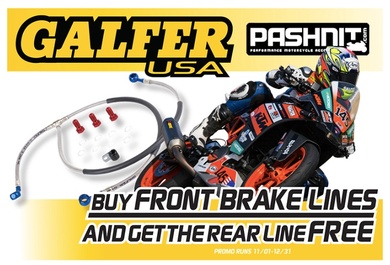 http://www.pashnitmoto.com http://www.pashnitmoto.com Like the ad says: Buy a front Galfer stainless steel brake line and get a rear included. The price is $97 including shipping, with your choice of line color. Colored banjo ends are an additional $25 and custom over-length orders add $10. Orders take about two weeks to arrive. A clutch line is also available for our VFRs. Pashnit offers this deal about twice per year, so now's your chance. Offer ends December 31. If you're not familiar with Pashnit Moto, a visit to their website is worth your time. Tim specializes in California moto tours and offers a huge inventory of motorcycle-specific accessories, all at fair prices. And he's a bike guy. 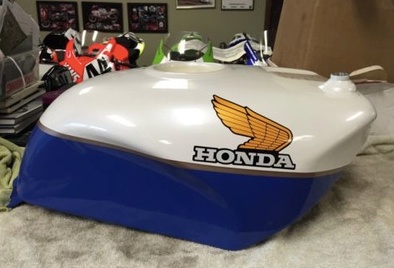 eBay item number 291631092460. eBay item number 291631092460. Even fairly pedestrian OEM parts can command exorbitant money in this current retro age. Try finding a NOS exhaust system for a '72 Honda CB500, for example, or maybe a fuel tank for an RC30, which is what we have here. It's not new old stock, but a used tank in very nice condition. The seller first describes it as "perfect" but then goes on to note that the warning stickers are yellowed, and the photos show a few other minor blems as well. My dictionary defines "perfect" as "without flaw," but such is the world of online selling. The opening bid is $2500 and shipping listed at $125 (!). I suspect the seller is a little optimistic on his valuation here, along with his other RC30 auction item, a headlight fairing listed at $1900 with the same shipping quote. Happily, to help potential bidders rationalize the cost of his parts, our seller includes this tactless explanation: "They are now rare as rocking' horse poo. Thats why you have to pay for big bucks for it." (sic) Good luck with the sale. Update: Both items unsold. 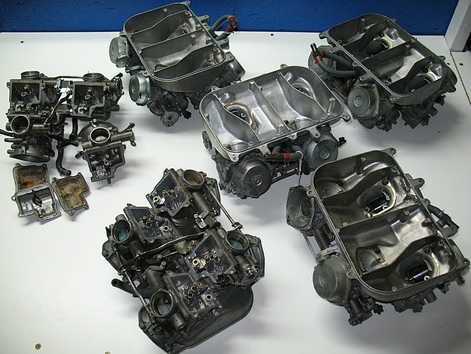 The old carburetor vs. fuel injection debate is long dead. "Fuelies" may have had a rocky start with the old mechanical automotive systems, but the EPA writing was on the wall and technology won out — for the better. The first mass-produced motorcycle injection system appeared on the 1980 Kawasaki Z1000 Classic, and our VFRs joined the game in '98 with the VFR800FI. But those of us who play with old bikes still fumble about with carbs. I should create a T-shirt which states, "Still Plays With Carburetors." With the colder weather settling over the Midwest, I'm inside catching up on my carb projects. It's often interesting to disassemble a set from the latest project bike to see what mischief has been wrought by previous fiddlers. Even nostalgic types have to admit that the new-generation performance tuning via digital mapping is more precise, effective and much, much easier than old-school trial & error with needles and jets. It's also a natural approach for this digital generation. But we're stuck with our carburetors and I will say that there's a certain satisfaction in getting all the parts and ports to align and end up with a sweet-running carbureted V4. Or maybe I'm just old. |
THE SHOP BLOG
|